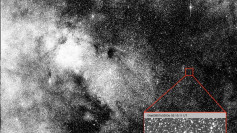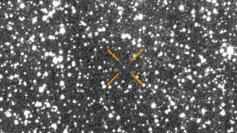Astronomers have detected new and unexpected changes in Comet 3I/ATLAS, the third confirmed interstellar object to pass through the solar system. The comet, which first drew attention in July after being spotted by the Asteroid Terrestrial-impact Last Alert System (ATLAS) in Hawaii, has shifted color again and now shows signs of non-gravitational acceleration-behavior that has puzzled researchers and reignited debates about its origins.
The discovery comes as the comet becomes visible from Earth, offering a once-in-a-generation opportunity for observation. Astronomers report that 3I/ATLAS brightened sharply as it approached perihelion, the closest point to the Sun, reaching a magnitude of around 9-bright enough to be seen with small telescopes or strong binoculars. Observations from NASA's Solar TErrestrial RElations Observatory (STEREO), the Solar and Heliospheric Observatory (SOHO), and the GOES-19 weather satellite indicate that its hue has shifted to a distinct electric blue, an unusual feature for any comet.
"Color photometry shows the comet to be distinctly bluer than the Sun," researchers noted in a pre-print paper describing the results. "The reason for 3I's rapid brightening, which far exceeds the brightening rate of most Oort cloud comets, remains unclear." Scientists believe the change may be linked to volatile gases such as carbon monoxide or nitrogen sublimating as the comet heats up near the Sun.
Adding to the mystery, the Jet Propulsion Laboratory's Davide Farnocchia reported that 3I/ATLAS is exhibiting "non-gravitational acceleration," meaning it is moving slightly faster than expected from gravity alone. Harvard astronomer Avi Loeb said the comet's motion revealed "a radial acceleration away from the Sun of 135 kilometers per day squared and a transverse acceleration of 60 kilometers per day squared." Loeb added that the acceleration likely results from intense outgassing as sunlight vaporizes frozen material on its surface.
"For a thermal ejection speed of a few hundred meters per second, the evaporation half-life of 3I/ATLAS is six months," Loeb wrote in a blog post. "This implies that over the month it takes 3I/ATLAS to cross its perihelion distance, it could lose about a tenth of its mass." The resulting plume of gas could make the comet even more visible in November and December, potentially detectable by the European Space Agency's Juice spacecraft.
The comet's appearance has captivated the astronomical community and amateur stargazers alike. Dr. Franck Marchis of the SETI Institute told IFLScience that "November will be the ideal month to observe Comet 3I/ATLAS, a rare interstellar visitor that will shine near Venus and the bright star Spica in Virgo." He advised that observers look "about two hours before sunrise" in the eastern sky, using a telescope or high-quality binoculars.
Marchis added that 3I/ATLAS's unusual trajectory and brightness make it an ideal target for citizen science. Through Unistellar's network of 25,000 telescopes, volunteers are gathering real-time data on its composition and motion. "Participants will be able to share their observations through the Unistellar app and contribute to ongoing research at the SETI Institute," Marchis said.
Amateur astronomers have already captured early images of the comet's blue glow, though experts caution it will not match the brilliance of past comets such as Hale-Bopp. Because it remains low on the horizon, many professional observatories are unable to track it, giving the public an opportunity to contribute unique data.
As the interstellar traveler moves farther from the Sun, astronomers are eager to see whether its brightness stabilizes or fades abruptly. "Without an established physical explanation, the outlook for 3I's postperihelion behavior remains uncertain," the research team wrote. "Continued observations may help provide a more definitive explanation for the comet's behavior."





